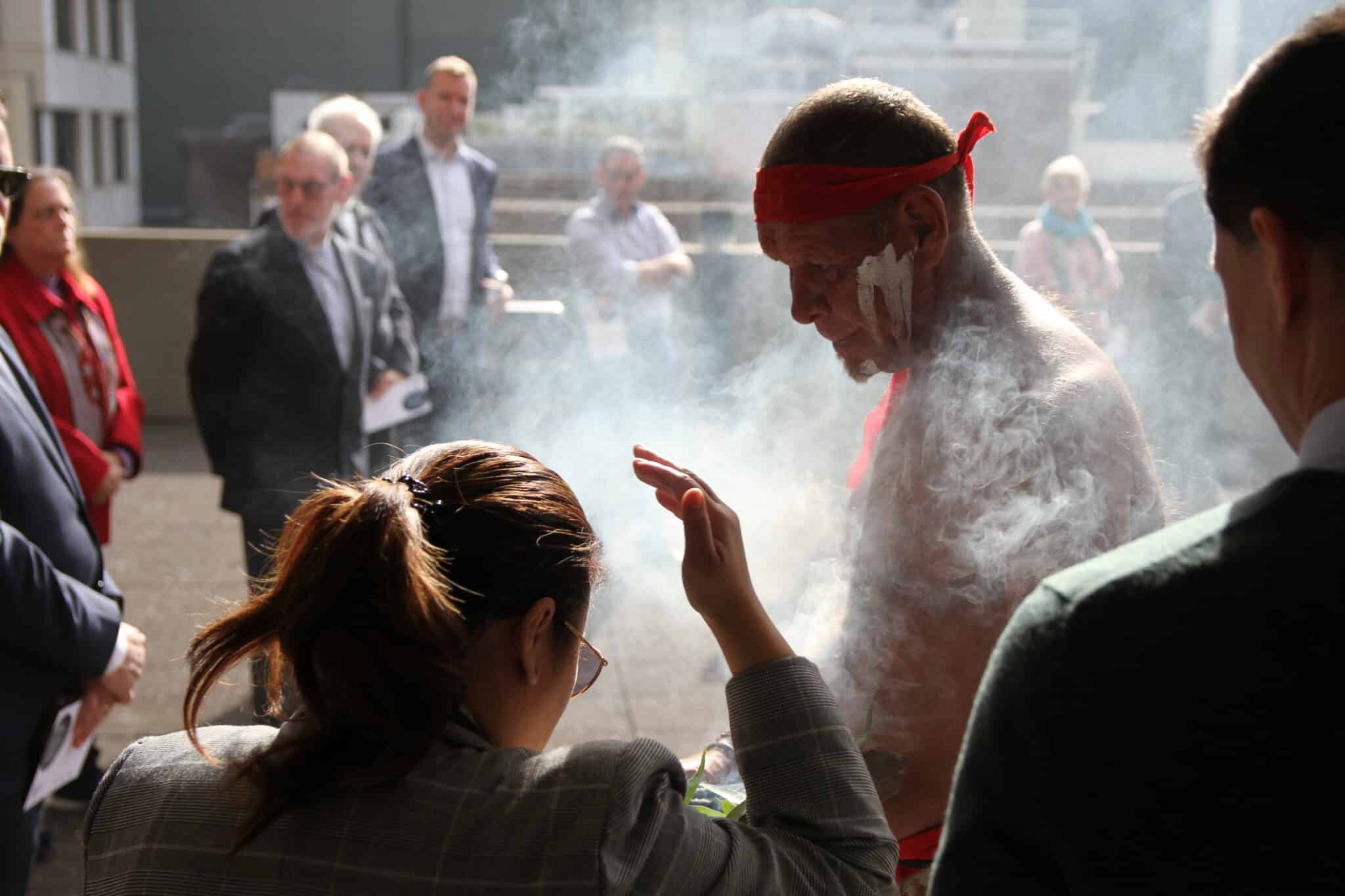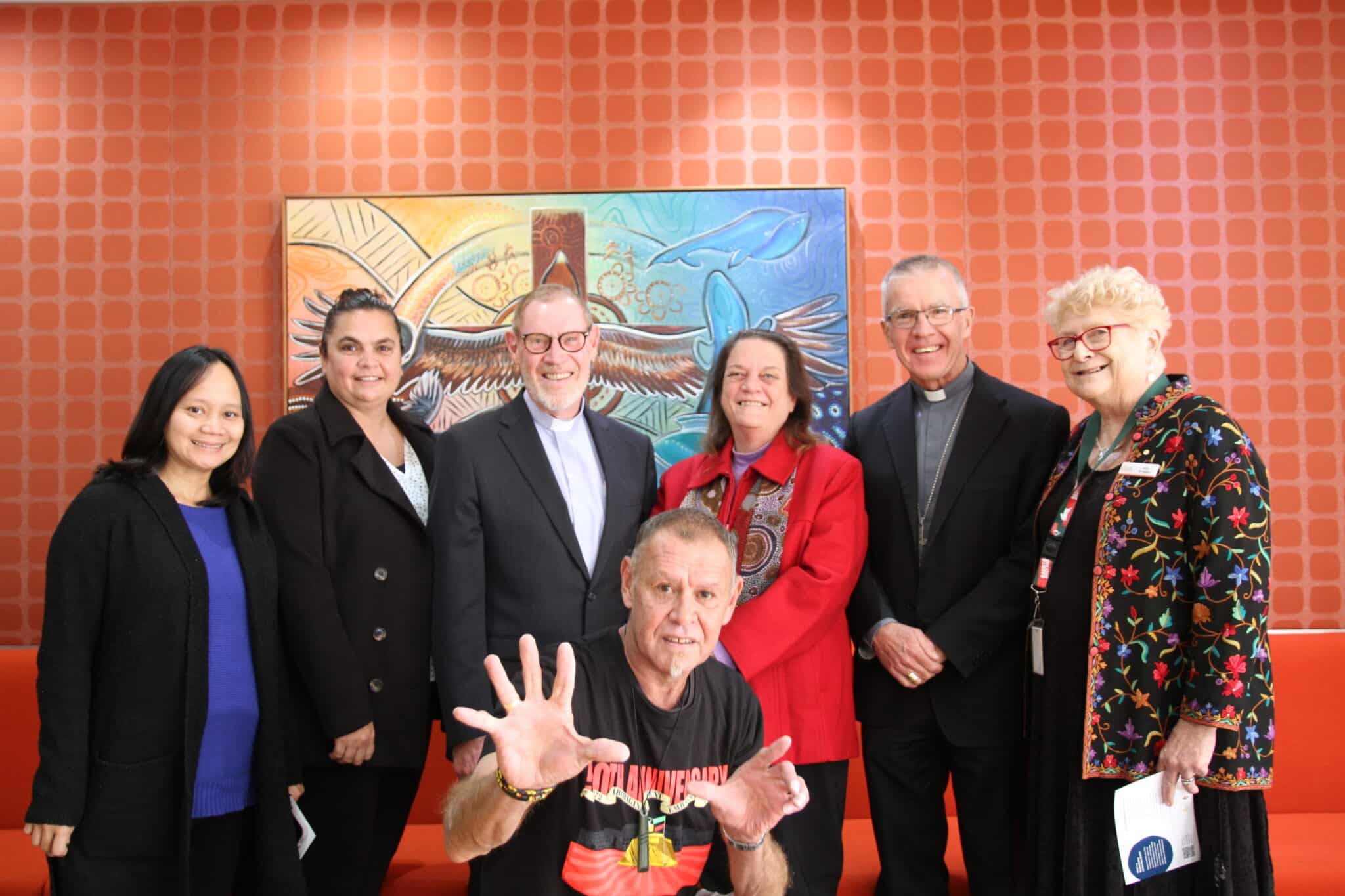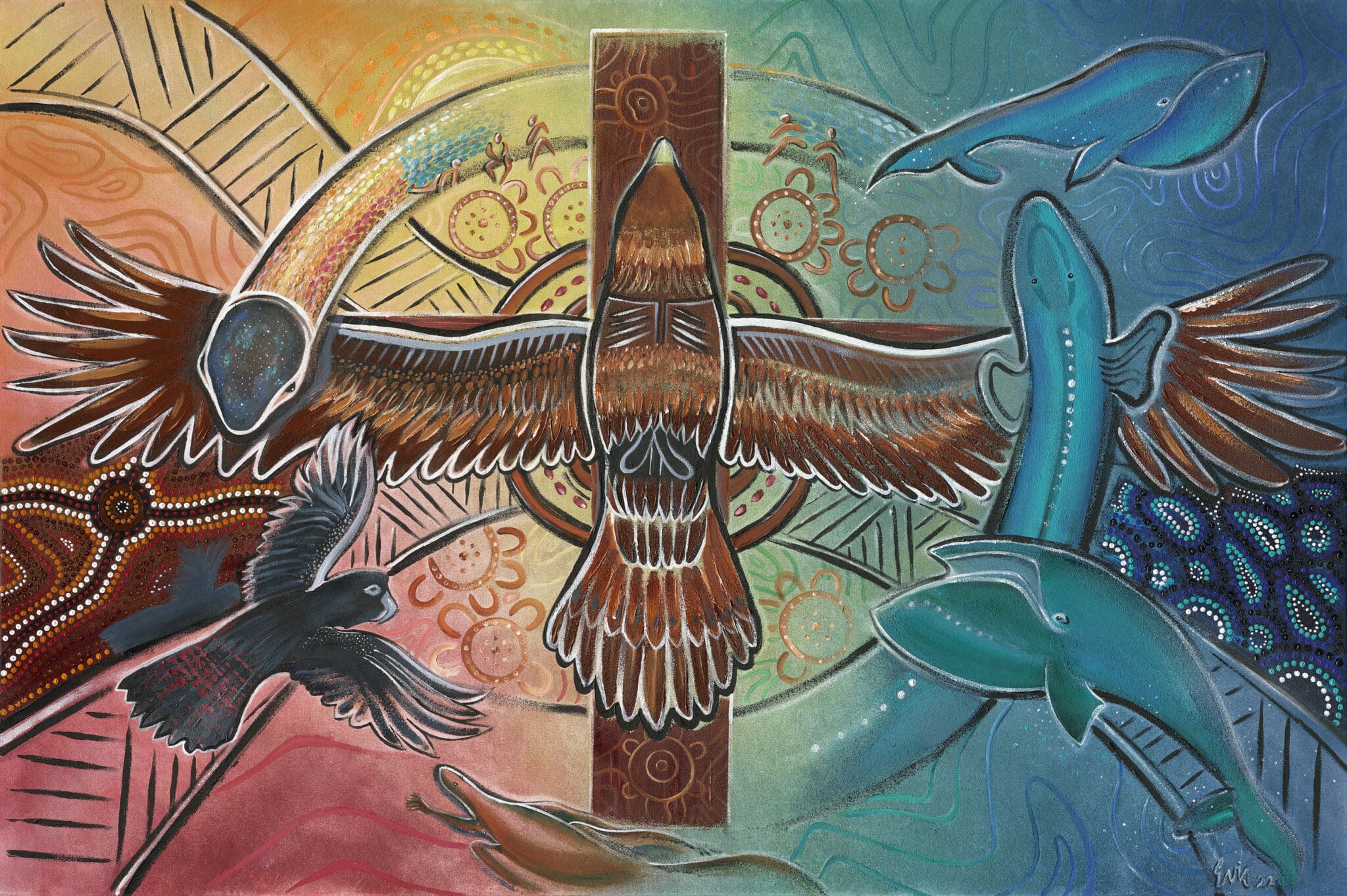“You are part of Australia and Australia is part of you. And the church herself in Australia will not be fully the church that Jesus wants her to be until you have made your contribution to her life and until that contribution has been joyfully received by others.”
These now-famous words, said by St John Paul II at Alice Springs in 1986, were quoted by Archbishop Anthony Fisher OP in his introduction to the Archdiocesan reconciliation action plan, launched on 31 May.
Archbishop Fisher asked Sydney Catholics to commit to acknowledging and healing the relationships with Aboriginal and Torres Strait Islander people.
“We have made great strides in our lifetime towards these goals but there is still much to do, and this plan seeks to set us on such a course,” he wrote.
The RAP was launched at the Polding Centre by archdiocesan justice and peace promoter Fr Peter Smith, Bishop Daniel Meagher, and Dr Lisa Buxton, executive officer of Sydney’s Aboriginal Catholic Ministry.

Dr Buxton, a Yugambeh and Bundjalung woman, gave the acknowledgement of country and told staff that national reconciliation week grew out of the 1993 week of prayer and reconciliation supported by Australia’s faith communities.
Since 1996, national reconciliation week has been a yearly commemoration held between 27 May and 3 July, the dates of the 1967 referendum and the High Court Mabo decision.
“As we journey through this process of reconciliation and walk together in unity, sharing this great southern land, may we all walk gently on country,” Dr Buxton said.
Fr Peter Smith said that while the RAP was the outcome of a long process, it was “an opportunity, not a task.”
“I believe that reconciliation is our stock in trade as Catholics. It’s what we do, and what we are good at,” he said.
“It always seems to me that the first point I have to deal with in reconciliation is reconciling myself and my own heart. Reconciliation requires a change of heart.”
The latest social profile of the Catholic community from the National Centre for Pastoral Research found there were more than 135,000 indigenous Catholics in Australia out of a total of 813,000 (around 16 per cent).
They are the youngest and fastest-growing section of the Catholic population, Fr Peter noted. And the 2021 census recorded more than 90,000 indigenous Australians living in greater Sydney.
“We often think of Aboriginal and Torres Strait Islander people as being those who live in rural and remote areas of our country, but the reverse is quite true,” he added.

The RAP launch was preceded by a smoking ceremony from Uncle Terry, an Anēwan and Kamilaroi man. Bishop Daniel Meagher explained that purification rites were common to all of the great world religions and cultures, and that while Catholics have traditionally used water for our rites of purification, indigenous Australians have found smoke more suitable.
“[St John Paul II] said that the Australian church isn’t really a full church until we receive with joy the customs and practices of the Aboriginal people,” Bishop Meagher said.
“So we are a common people, a common Christian people gathered here now, a common Catholic people, to try to seek the presence of God, to seek reconciliation with the original occupants of this land, seeking God’s purification, knowing God loves us and wants to enter into relationship with us.”
“Recognising only Jesus is the redeemer, the messiah, there are so many different ways of expressing our need for redemption—this is one culturally appropriate way,” he added.
Indigenous artwork commissioned for RAP launch
The RAP launch was accompanied by the commissioning of a new artwork for the archdiocese, titled Coming Together, to Gather as One. It depicts a representation of the creation, “symbolised by Biamii cave drawing and several creation stories, including the ‘Boora Birra Eel Dreaming’ and the ‘Whale’ dreaming stories and their importance to the Moodgingal of the Sydney basin.”
The central device of the work portrays, “the Creator moving through Mother Earth and towards the Sky Spirits.”

The artwork was produced by Gumbaynggir/Dhungatti man Richard Campbell, whose artworks gained prominence during World Youth Day 2008, and his nephew, Gumbaynggir/Birrpai artist Evis Heath.
“We all have a spiritual connection, we’re all brothers and sisters, with the animals, the trees, rivers and rocks, we all belong to one big god—call it Christ, we call it Birrigun, we are all one in God,” Mr Campbell wrote in his artist’s statement.
The archdiocesan RAP is a “reflect” plan, the first of four stages facilitated by Reconciliation Australia. As part of the “reflect” stage an Aboriginal and Torres Strait Islander advisory group will be convened to guide “a patient, staged and sustainable program of healing, respect and reform, through an active process of truth-telling,” the RAP says.
CatholicCare had a “reflect” RAP endorsed in 2021, and the archdiocese anticipates many agencies will “work in collaboration and symmetry” on their own plans.
“This Reflect RAP enables the Catholic Archdiocese of Sydney to deepen its understanding of its sphere of influence and the unique contribution it can make to lead progress across the five dimensions,” Reconciliation Australia CEO Karen Mundine wrote.
“Getting these first steps right will ensure the sustainability of future RAPs and reconciliation initiatives, and provide meaningful impact toward Australia’s reconciliation journey.”
